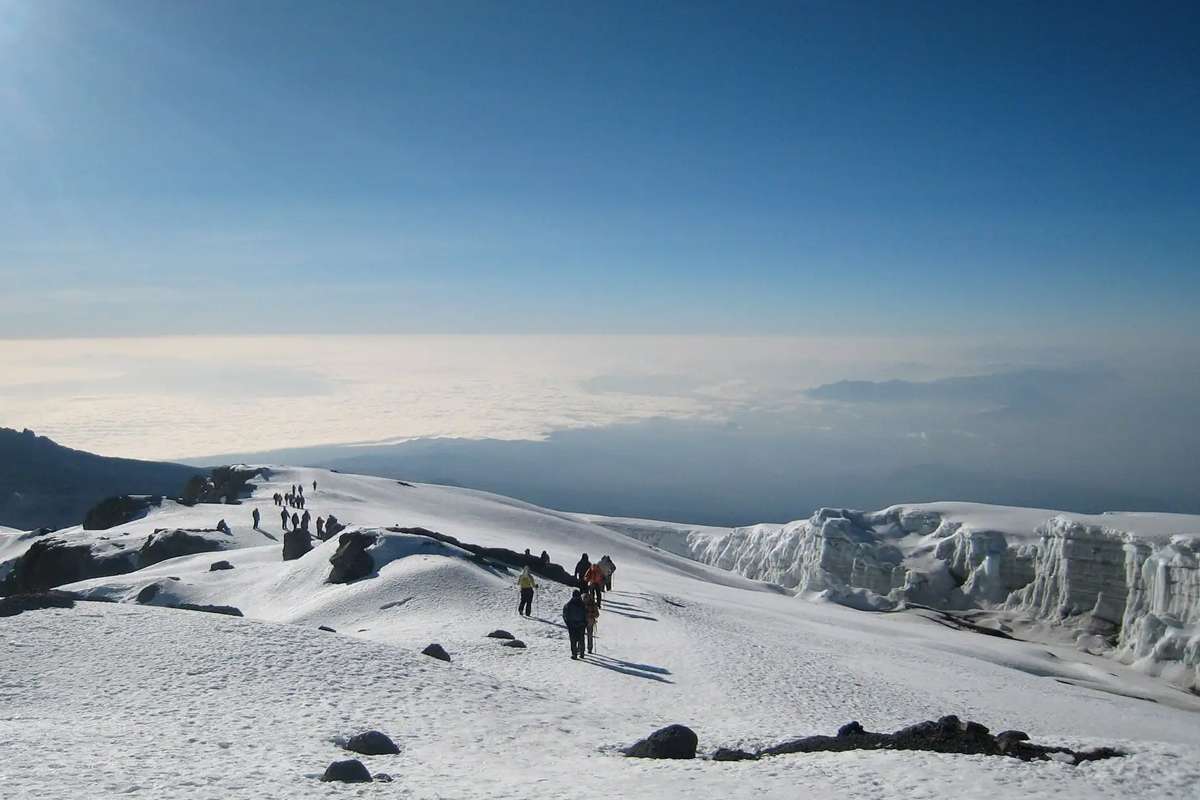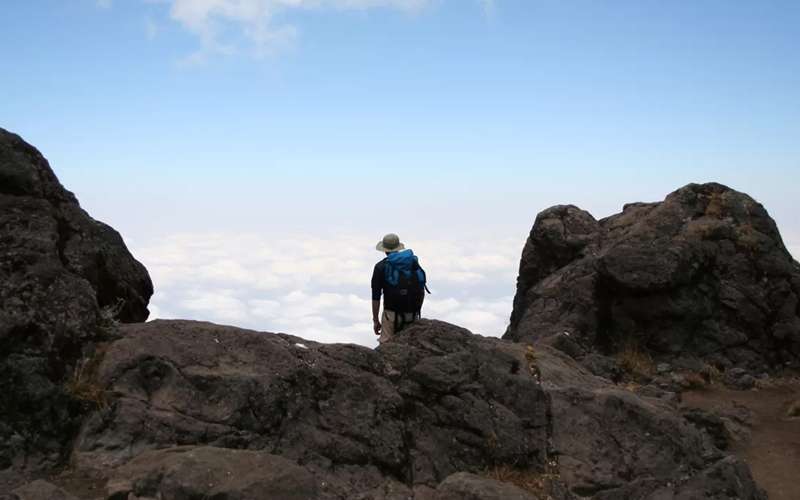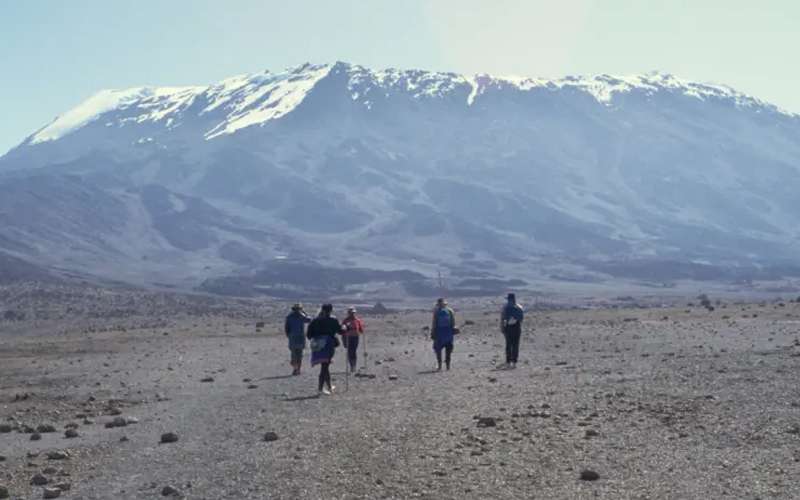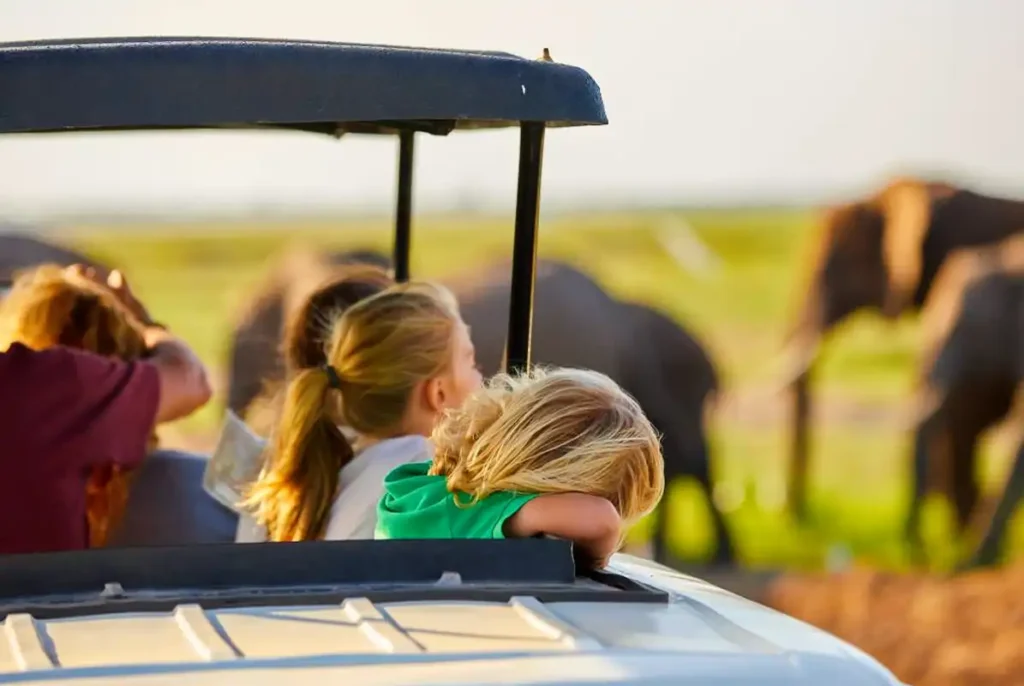Solo climbing Mount Kilimanjaro is an extraordinary adventure that combines physical challenge with personal achievement. While most climbers opt for group expeditions, solo climbing offers a unique experience that allows for deeper reflection and a more personal connection with the mountain. This guide provides essential information and tips for those considering a solo ascent of Africa’s highest peak.
Why Choose a Solo Climb?
- Personal Challenge and Achievement: Climbing Kilimanjaro alone presents a significant personal challenge. The sense of achievement upon reaching the summit is magnified when you know you’ve done it on your own. It’s an opportunity to test your limits, build resilience, and gain confidence.
- Flexible Itinerary: Solo climbers have the freedom to create their own itinerary. You can set your own pace, take breaks whenever needed, and spend as much time as you like at different points along the route. This flexibility allows for a more relaxed and enjoyable experience.
- Deeper Connection with Nature: Solo climbing offers a unique opportunity to connect with nature on a deeper level. The solitude of the mountain allows you to fully immerse yourself in the environment, appreciating the beauty and tranquility of Kilimanjaro’s diverse landscapes.
Planning Your Solo Climb
- Choosing the Right Route: Selecting the right route is crucial for a successful solo climb. Popular routes like Marangu, Machame, and Rongai are well-traveled and offer more support services. The Lemosho and Northern Circuit routes are longer and less crowded, providing a more solitary experience.
- Permits and Regulations: Solo climbers must adhere to the same permits and regulations as group climbers. You will need a park entry permit, a climbing permit, and a licensed guide. Hiring a guide is mandatory, even for solo climbers, to ensure safety and compliance with park regulations.
- Fitness and Preparation: Physical fitness is essential for climbing Kilimanjaro. Start training several months in advance, focusing on cardiovascular fitness, strength, and endurance. Hiking, running, and strength training are all beneficial. Also, practice hiking with a backpack to simulate carrying your gear.
Essential Gear for Solo Climbers
- Clothing and Footwear: Pack appropriate clothing for the varying climates of Kilimanjaro. Layering is key to staying comfortable. Include moisture-wicking base layers, insulating mid-layers, and a waterproof outer layer. Sturdy hiking boots with good ankle support are essential.
- Camping and Cooking Equipment: If you plan to camp, bring a lightweight tent, a sleeping bag rated for cold temperatures, and a sleeping pad. A portable stove, cooking utensils, and sufficient food supplies are also necessary. Make sure your equipment is reliable and easy to use.
- Safety and Navigation: Carry a map, compass, and GPS device to navigate the trails. A first aid kit, a headlamp with extra batteries, and an emergency communication device (such as a satellite phone) are crucial for safety. Learn basic first aid and emergency procedures before your climb.
Acclimatization and Health
- Managing Altitude Sickness: Acclimatization is key to preventing altitude sickness. Choose a route that allows for gradual ascent and includes rest days. Hydrate frequently, eat well, and listen to your body. Symptoms of altitude sickness include headache, nausea, dizziness, and fatigue. If symptoms worsen, descend immediately.
- Staying Hydrated and Nourished: Staying hydrated is crucial at high altitudes. Drink plenty of water and avoid alcohol and caffeine. Bring a water purification system to ensure a safe water supply. Eat a balanced diet with enough calories to sustain your energy levels.
- Mental Preparation: Mental preparation is just as important as physical fitness. Solo climbing requires determination, resilience, and a positive mindset. Visualize your success, set small goals, and stay motivated. Bring a journal or book to keep your mind occupied during rest periods.
Experiencing the Climb
- Enjoying the Journey: Take time to appreciate the journey, not just the destination. The diverse landscapes, from lush rainforests to alpine deserts and icy glaciers, offer breathtaking views and unique experiences. Enjoy the solitude and the opportunity for self-reflection.
- Interacting with Locals and Guides: Although you’re climbing solo, you’ll still interact with guides, porters, and other climbers along the way. Engage with them to learn about the local culture, wildlife, and environment. Building these connections can enhance your overall experience.
- Documenting Your Adventure: Document your climb through photos, videos, and journal entries. Capturing the moments of your journey will allow you to relive the experience and share it with others. It also serves as a reminder of your incredible achievement.
Solo climbing Mount Kilimanjaro is a rewarding and transformative adventure. With careful planning, preparation, and the right mindset, you can conquer Africa’s highest peak on your own terms. Embrace the challenge, enjoy the journey, and savor the triumph of reaching the summit.
FAQs
1. Is it safe to climb Kilimanjaro alone?
Yes, it is safe to climb Kilimanjaro alone as long as you hire a licensed guide, follow safety protocols, and are well-prepared physically and mentally.
2. Do I need a guide for a solo climb?
Yes, hiring a licensed guide is mandatory for all climbers, including solo climbers. Guides ensure your safety and help navigate the trails.
3. How do I prepare for a solo climb of Kilimanjaro?
Preparation includes physical training, acclimatization, packing essential gear, and mental preparation. Start training several months in advance and plan your itinerary carefully.
4. What are the challenges of solo climbing Kilimanjaro?
Challenges include physical exertion, altitude sickness, and the mental challenge of climbing alone. Proper preparation and acclimatization are key to overcoming these challenges.
5. What is the best route for a solo climb?
Popular routes for solo climbs include Marangu, Machame, and Rongai. For a more solitary experience, consider the Lemosho or Northern Circuit routes.
To ensure you’re well-prepared for your Kilimanjaro adventure, explore the following topics on our page:
Visit our page for detailed information and tips to make your Kilimanjaro climb safe, enjoyable, and memorable.





